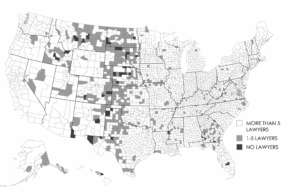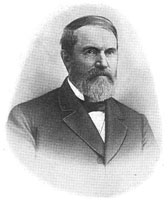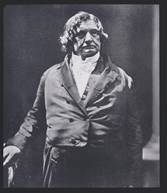Rural America and Rural Wisconsin: Legal Deserts, or Less So?
During the past twenty years, the American Bar Association and many state bars have repeatedly proclaimed there to be an acute shortage of lawyers in rural America. A grim picture is painted of “legal deserts”: rural counties beset by a shrinking population of lawyers (in some cases, no lawyers at all) and a widespread reluctance of younger lawyers to forgo the attractions of urban life in order to fill the gap. The argument is that the shortage threatens access to justice and even basic respect for the rule of law in much of the nation.
Counties with Five or Fewer Lawyers, 2020
(generated from a template provided courtesy of mapchart.org)
On such premises, since 2008, nearly half of all states, including Wisconsin, have created rural lawyer recruitment (RLR) programs. These RLR programs variously provide stipends, student loan repayment subsidies, and government legal positions for lawyers willing to commit to rural practice for a set period of time; stipends for students willing to intern with rural lawyers; and support and training for rural practice. Yet to date, most RLR programs have been based on incomplete analysis and ad hoc solutions.


